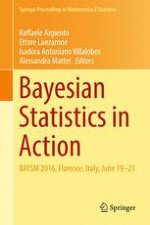This book is a selection of peer-reviewed contributions presented at the third Bayesian Young Statisticians Meeting, BAYSM 2016, Florence, Italy, June 19-21. The meeting provided a unique opportunity for young researchers, M.S. students, Ph.D. students, and postdocs dealing with Bayesian statistics to connect with the Bayesian community at large, to exchange ideas, and to network with others working in the same field. The contributions develop and apply Bayesian methods in a variety of fields, ranging from the traditional (e.g., biostatistics and reliability) to the most innovative ones (e.g., big data and networks).
